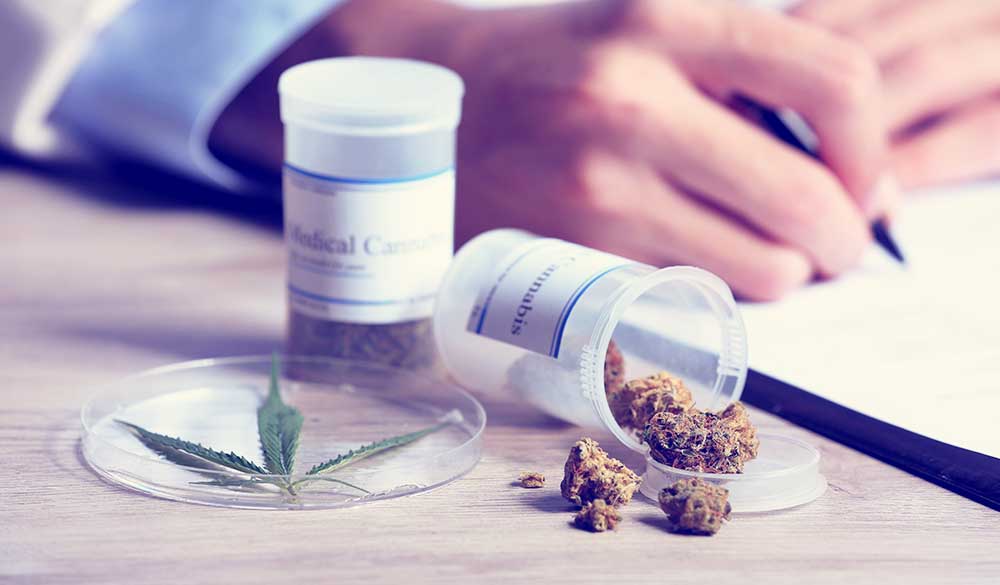If you’re one of the millions of people who thought cannabis was now easily available in Australia for medical purposes, think again – for not everything is as it appears in the evening news...
Just a few years back things looked promising; the impetus to legalise the plant as a medicine had begun in earnest. Huge media attention was focused on ex-nurse Lucy Haslam and her son Dan, whose story captured the public’s imagination. Dan, in his early 20s, was a young man struggling with nausea and vomiting induced by the chemotherapy used to fight his inoperable bowel cancer. This was in 2013, and seeing the dramatic relief cannabis gave him, Lucy and Dan together with dad Lou, a retired NSW Police Officer in drug enforcement, started campaigning for the herb’s re-introduction to the physician’s armamentarium.
Tragically, Dan died in 2015, but Lucy had already founded United in Compassion (UIC), a not-for-profit advocacy group whose primary mission was – and still is – to win patient access to medicinal cannabis (MC) in a manner that is safe, affordable, equitable, expeditious and favourable for all who need it. The lobbying of politicians at state, territory and federal levels soon followed and in November 2014, Lucy hosted the inaugural UIC Medicinal Cannabis Symposium in Tamworth, NSW. Experts in the field from around the world flew in to discuss the plant’s many therapeutic properties, and how it was being used widely and with huge success overseas. Largely funded by Mike Baird, then NSW Premier, the event also attracted a clutch of other politicians including Green Party leader Senator Richard Di Natale, himself a qualified medical practitioner.
That same year, Senator Di Natale, with support from Senators Macdonald, Leyonhjelm and Urquhart, proposed new legislation to the senate – the Regulator of Medicinal Cannabis Bill 2014.[1] It outlined a system for regulating MC outside the jurisdiction of the Government’s normal regulator, the Therapeutic Goods Administration (TGA), seeking instead to create a stand-alone, single-purpose body responsible for research, licensing, manufacture, cultivation, supply, and import/export of MC with the idea Australia would eventually have a local supply. This ‘national’ regulator was to be a ‘one stop shop’ for everything MC, including the critical matter of patient access.
In February 2015, the bill was referred to the senate’s Legal and Constitutional Affairs Legislation Committee for review and counsel. After over six months of vigorous debate and consultation across a variety of areas and disciplines, the committee recommended the bill be passed into law. However, the Australian Government had other ideas, feeling that cannabis, rather than being handled by a proposed new specialist regulator, independent of the established TGA framework, should instead be subject to the rigid system of testing, registering and oversight like any other drug, based largely on the pharmaceutical model.
One of its main concerns, it turned out, was that the bill might contravene Australia’s international treaty obligations under the United Nations 1961 Single Convention on Narcotic Drugs.[2] This document places the same restrictions on the cannabis plant as it does on cocaine, heroin and other opiates – an important point given Australia cultivates well over half the world’s poppies used to make prescription opioid medicines. This is a lucrative industry the government doesn’t wish to see jeopardised, though inclusion of cannabis within the Single Convention is today widely criticised as policy that fails to keep pace with science.
This is evident given the plant’s main psychoactive ingredient, delta-9 tetrahydrocannabinol (THC), wasn’t structurally identified until 1964[3] (three years after the Single Convention came into being), therefore its inclusion was based on no established toxicological or pharmacological understanding of the plant whatsoever. Hardly the poster child for the application of evidence-based science in helping guide policy decisions.
In any case, responsibility for cannabis was in the end handed to existing departments and processes within government in a completely divergent initiative and on 24 February 2016 (the anniversary of Dan Haslam’s death), the Australian Government passed the Narcotic Drugs Amendment Bill.
The legislation received overwhelming cross-bench support, going through parliament in record time. It amended the old Narcotic Drugs Act of 1967 to allow the cultivation, research and manufacturing of cannabis and cannabis based products in Australia for the first time in over 50 years. Labor had initially wanted to place this Bill, like its predecessor, before a committee for further review. Instead, it agreed to forego such a process on the proviso an advisory council would be established to assist in the writing of the accompanying regulations, but the government reneged on its pledge. Not only did the promised ‘Australian Advisory Council on the Medicinal use of Cannabis’ fail to contribute to any of these important foundational regulations, it wasn’t even formed until January 2017, months after the rules took effect on 1 November 2016.
Other changes necessary for the Narcotic Drugs Amendment Bill to function were needed as well, so in August 2016 ‘cannabis’ (i.e. the plant, its resins, seeds and extracts) as well as certain isolated cannabinoids such as THC, were reclassified in the Standard for Uniform Scheduling of Medicines and Poisons (SUSMP) - the Poisons Standard from a Schedule 9 ‘Prohibited Substance’ to a ‘Controlled Drug’ (Schedule 8). Cannabidiol (CBD), the cannabinoid which exhibits significant anti-convulsant properties currently being investigated in epilepsy trials, was placed in Schedule 4 (‘Prescription Only Medicine’).
As a result of this bill, MC cultivation, manufacturing and research licensing now came under the jurisdiction of the Office of Drug Control (ODC) – part of the Department’s Health Products Regulation Group. The ODC enforces very strict requirements in regards to security, risk of diversion, chain of custody and transport of MC products amongst numerous other duties, and works in tandem with its sibling, the TGA. This latter government department is responsible for not only patient access to MC, but also MC finished product requirements for safety, efficacy and quality like any other pharmaceutical medication – a process which is not only time consuming, but incredibly expensive.
Critics of the scheme, such as businessman and philanthropist Barry Lambert (who donated $34 million for MC research to Sydney University), condemned the ODC/TGA regulations as being too restrictive and has taken his hemp business and research dollars to the United States.
Patient access too is now a lengthy and protracted process, with the TGA’s Special Access Scheme (SAS) ‘Category B’ and the Authorised Prescriber scheme being the only ways patients can get hold of the drug legally. And to make matters worse, in a behind-closed-doors move, ministers tweaked the SAS so that the other category within it – ‘Category A’[4] designed for the terminally ill – was not applicable for cannabis after the regulations came into effect.
This means that the one patient group most in need on compassionate grounds is being made to wait longer periods of time for a successful ‘Category B’ application. Time, which many of them simply do not have. At the time of writing this article, another lobby group (i.e. Medicinal Cannabis Advisory Group – Queensland) is petitioning MPs to disallow this regulation, but their success looks a long way from certain.
A further problem with the access schemes is that its gatekeepers – the medical practitioners who have to authorise and make applications for their patients – have no training in the use of MC and know little of the intricacies of the endocannabinoid system; the array of receptors around the body responsive to the plant’s chemicals. Doctors are therefore reluctant to open themselves up to potential litigation for prescribing something they don’t understand (not an unreasonable position if your career could be on the line). So when the government blanketed the media, declaring doctors could now prescribe cannabis, it was nothing more than lip service and provided the medical profession as a potential scapegoat for lack of uptake of the MC program by patients.
On top of this, not only are the ODC and TGA involved in MC Regulations, but the individual State and Territory Governments also have a say in how cannabis is used within their own jurisdictions. Everything the original Regulator of Medicinal Cannabis Bill 2014 identified as being an obstacle to patient access has come to pass, and two Federal Government agencies along with individual State and Territory requirements are now involved in the process. Patients and their doctors are drowning in a labyrinth of documentation and legal preconditions, diverting many back to black market products – the very thing the regulations were designed to put a stop to.
Recent police raids on compassionate MC suppliers, such as Jenny Hallam in South Australia, have now left hundreds of patients without what is for some a life-saving medicine. One has to question who will be held legally responsible should patients die or suffer catastrophic seizures because their medication was confiscated – regardless of its legal status?
Where are we now?
Perhaps this is best summarised by Lucy Haslam herself, who’s been tirelessly campaigning since the start:
Initially I felt immense pride that Australian leaders saw fit to pass legislation on the basis of compassion for the sick, but what followed was a complete travesty. The Government failed to appoint an Advisory Council and set barricades and brick walls before genuine patients in distress. One can only conclude this was done wilfully to prevent patient access.
At present, I am aware of only one cultivation licence that has been issued by the ODC to an Australian company. Recent changes announced by the Federal government to import MC products for patients until an Australian supply is established are welcome and should reduce the wait time on accessing product, but do nothing to speed up or simplify the patient application process to access the MC in the first instance.
Whilst regulating something as complex as the cannabis plant certainly has its own unique challenges and will no doubt continue to evolve as time goes on, we can hope that people are put before politics and profits. Let us finish with another quote, this time from Cicero – a timely reminder to those who have it within their power to change the current state of affairs.
Salus populi suprema lex esto, which translates as – “Let the welfare of the people be the supreme law” – Cicero (106-43 BC).
References
- Di NataleR, MacdonaldI, LeyonhjelmD & Urquhart A.Regulator of Medicinal Cannabis Bill 2014. The Parliament of the Commonwealth of Australia, 2013-2014. Viewed 20 Feb 2017, http://parlinfo.aph.gov.au/
- United Nations.Single Convention of Narcotic Drugs, 1961. Viewed 20 Feb 2017, https://www.unodc.org/pdf/convention_1961_en.pdf
- Gaoni Y, Mechoulam R.Isolation, structure and partial synthesis of an active constituent of hashish. J Am Chem Soc 1964; 86:1646-1647.
- Therapeutic Goods Administration.Category A Special Access Scheme - Australian Government:Department of Health, 2016. Viewed 20 Feb 2017, https://www.tga.gov.au/sites/default/files/access-forms-sas-categorya-14...
DISCLAIMER:
The information provided on FX Medicine is for educational and informational purposes only. The information provided on this site is not, nor is it intended to be, a substitute for professional advice or care. Please seek the advice of a qualified health care professional in the event something you have read here raises questions or concerns regarding your health.



